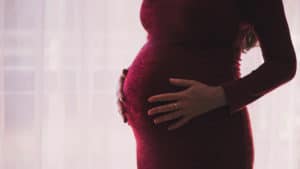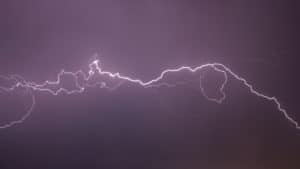With summer almost here, there are good reasons to heed the wisdom of "Slip-Slop-Slap — slip on a shirt, slop on the sunscreen, and slap on a hat." On the other hand, chemical sunscreens have their dangers too. What to do?
A new study suggests your lifespan could be affected by solar activity that occurred in your early life, either as a young child, or when unborn. How?
The Long and Short of It: Ultraviolet Radiation
Anyone on earth knows the sun, even at 93 million miles away, is one hot topic.
Electromagnetic waves (EM) are created by the process of nuclear fusion at the core of the sun. They arrive at our doorstep in differing wavelengths about eight minutes after being produced.
To most, the sun produces sunlight and that is the end of the story. But EM waves pack a powerful punch that delivers a lot more than visible light, including:
- Infrared energy (IR)
- Ultraviolet rays (UVR)
- X-rays
- High energy gamma rays
The amount of UVR that reaches ground level depends on altitude, depletion of the ozone layer, latitude, season, weather conditions, and other factors.
As far as we know, there are three types of UV waves:
- UVC (the shortest wavelength)
- UVB (next longest wavelength)
- UVA (longest wavelength)
You do not hear much about UVC because it is absorbed by the atmosphere and ozone layer. UVA and UVB have more staying power. According to recent research, their impact may last for generations.
The Potential Danger of Ultraviolet Radiation Over Time
A fair amount is known about the effect of UV waves on the human body. Exposure to UVR leads to:
- Premature aging of the skin
- Wrinkles
- Age spots
- Cataracts
- Skin cancer
In a study published in the Proceedings of the Royal Society B , Norwegian researchers reviewed birth and death information of over 8,000 people who lived in Norway between 1676 and 1878. They compared the demographic data to solar cycles during the same period.
The sun moves through periods of high and low activity over a roughly 11-year cycle. During periods of greater action, incidence of solar flares, sunspots, and ejection of solar plasma occur more frequently, and with greater intensity. The result is higher levels of UV waves streaming to earth.
The study returned startling results, including:
- Intense solar activity during early human life could be predictive of disease development later in life.
- Those born during a higher period of solar activity may not live as long as those born during lower periods. The study found individuals born during a lower period of solar activity lived approximately five years longer than more highly irradiated counterparts.
- Female children of women exposed to higher solar activity during pregnancy could have a shorter lifespan, and less reproductive success, than women without as much UV exposure.
- In the study, women (and children) of lower economic means fared worse than higher status mothers. Study authors suggest this could be due to access to better diet and time indoors by higher status women.
- The report notes, "high solar activity at birth decreased the probability of survival to adulthood for both men and women."
Reasons offered by study authors for reduced lifespan and increased possibility of disease include:
- The effect of UV on folate (Vitamin B): UV rays are found to interfere with folate and folic acid in the bloodstream. Both compounds aid gestational health and play roles in cardiovascular health and disease prevention. UV rays are shown to affect these vitamins in the bloodstream. Interestingly, another recent study found Vitamin B may reduce recurrence of skin cancer in predisposed individuals.
- Genetic variants: In addition to the loss of folate, individuals with genetic variations involving synthesis of vitamin D may be at greater risk from the ravages of UV rays.
- Survival and fitness: Those with low quality diets may be more vulnerable to UV-mediated damage.
Helping Yourself, the Trouble with Sunscreens
This research adds to deepening knowledge of the dangers of ultraviolet radiation and the question of how best to protect yourself and your family.
Controversy about the safety of chemical sunscreens continues. Studies show chemical properties of some sunscreens disrupt the human endocrine system, potentially leading to thyroid or reproductive dysfunction.
The Environmental Working Group reports new melanoma cases diagnosed each year have tripled since the 1970's. Melanoma is the most dangerous form of skin cancer. While broad spectrum sunscreens protect against UV waves that can trigger melanoma, sunscreen is not proven to prevent skin cancer of any kind.
Keeping these risks in mind, consider steps for sun safety this year that include:
- Research your sunscreen. Select the least toxic sunscreen for your lifestyle. Know what to buy and how to apply.
- Stick to the shade and wear protective clothing.
- Wear sunglasses rated for UV protection.
- Avoid midday sun.
Our medical practice focuses on integrative treatments and solutions to prevent disease, and maintain good health and quality of life for our patients. So one important tip: If you choose to use sunscreens, good nutrition and sufficient iodine are important to protect health.
The sun is essential for life on earth, but there is more to sunlight and sunscreen than meets the eye. Make smart choices and have a safe summer.


